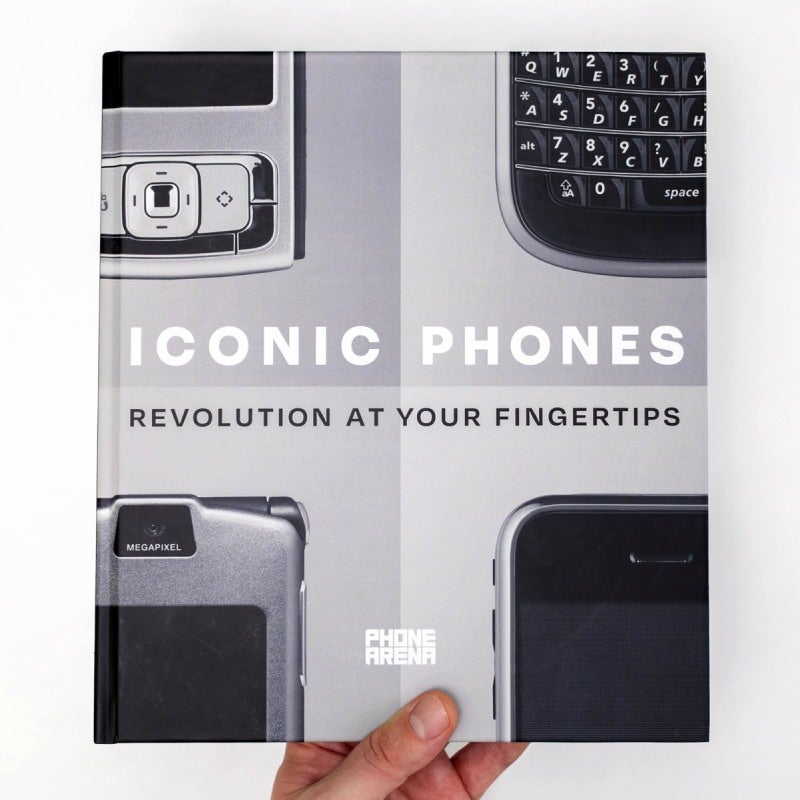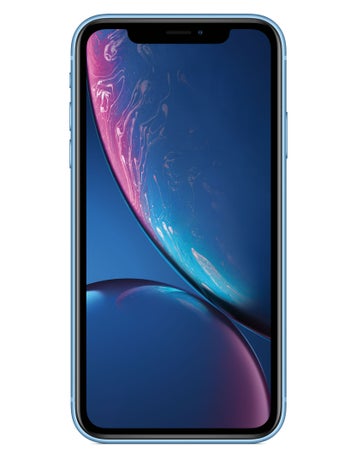Apple iPhone XR vs Apple iPhone XS Max Specs Comparison
Compare mobile phone specifications of up to three devices at once. Our specs comparison tool helps you find and compare the perfect phone for your needs.
|
|
|
| Apple iPhone XR | Apple iPhone XS Max |
|
Released
·
Oct 26, 2018
|
Released
·
Sep 21, 2018
|
|
6.1-inch · 1792x828px
|
6.5-inch · 2688x1242px
|
|
Single camera
|
Dual camera
|
|
3GB · 64GB
|
4GB · 64GB
|
|
2942 mAh
|
3179 mAh
|
| Check prices |
Availability
| Officially announced | |
|---|---|
| Sep 12, 2018 | Sep 12, 2018 |
| Prices (MSRP) | |
| 3GB/64GB - $749 | 4GB/64GB - $1099 |
Design
| Dimensions | |
|---|---|
| 5.94 x 2.98 x 0.33 inches 150.9 x 75.7 x 8.3 mm |
6.20 x 3.05 x 0.30 inches 157.5 x 77.4 x 7.7 mm |
| Weight | |
| 6.84 oz / 194.0 g | 7.34 oz / 208.0 g |
| Materials | |
| Back: Glass Frame: Aluminum |
Back: Glass Frame: Stainless steel |
| Resistance | |
| Water, Dust; IP67 | Water, Dust; IP68 |
| Biometrics | |
| 3D Face unlock | 3D Face unlock |
| Keys | |
| Left: Volume control, Other; Right: Lock/Unlock key | Left: Volume control, Other; Right: Lock/Unlock key |
| Colors | |
| Black, Yellow, Blue, Red, White, Rose gold | Gold, Silver, Space gray |
Display
| Size | |
|---|---|
| 6.1-inch, 79.24% screen-to-body | 6.5-inch, 84.29% screen-to-body |
| Type | |
| IPS LCD, 625 nits | OLED, HDR, 625 nits |
| Resolution | |
| 1792x828px, 19.5:9 ratio, 326 PPI | 2688x1242px, 19.5:9 ratio, 458 PPI |
| Features | |
| Oleophobic coating | HDR support, Pressure-sensitive, Oleophobic coating, Scratch-resistant glass, Ambient light sensor, Proximity sensor |
PhoneArena Display Test
| Bright Max (20% APL) | |
|---|---|
| Untested | Untested |
| Bright Min | |
| 2 (Good) | 2 (Good) |
Learn more on our
PhoneArena Display Test Results page.
Hardware
| System chip | |
|---|---|
| Apple A12 Bionic APL1W81 (7 nm) | Apple A12 Bionic APL1W81 (7 nm) |
| Processor | |
| Hexa-core Vortex and Tempest | Hexa-core Vortex and Tempest |
| GPU | |
| Apple 4-core GPU | Apple 4-core GPU |
| Memory | |
| 3GB/64GB 3GB/128GB 3GB/256GB |
4GB (LPDDR4)/64GB 4GB/256GB 4GB/512GB |
| Storage expansion | |
| not expandable | not expandable |
| OS | |
| iOS (15.x, 14.x, 13.x, 12.x) | iOS (15.x, 14.x, 13.x, 12.x) |
Battery
| Type | |
|---|---|
| 2942 mAh, Li - Ion | 3179 mAh, Li - Ion |
| Charging | |
| USB Power Delivery Qi wireless charging | USB Power Delivery Qi wireless charging |
| Charge speed | |
| Wireless: 7.5W | Wired: 15.0W Wireless: 7.5W |
Battery Life Estimate
4h 14min
Browsing
11h 8min
Video
5h 50min
Gaming
4h 35min
Battery Life Estimate
Untested
Browsing
8h 33min
Video
5h 25min
Gaming
Untested
Camera
| Rear | |
|---|---|
| Single camera | Dual camera |
| Main camera | |
| 12 MP (Sapphire crystal lens cover, OIS, PDAF, CMOS image sensor, BSI sensor) Aperture size: F1.8 Focal length: 26 mm Sensor size: 1/2.55" Pixel size: 1.4 μm | 12 MP (Sapphire crystal lens cover, OIS, PDAF, CMOS image sensor, BSI sensor) Aperture size: F1.8 Focal length: 26 mm Sensor size: 1/2.55" Pixel size: 1.4 μm |
| Second camera | |
| 12 MP (Telephoto, Sapphire crystal lens cover, OIS, PDAF, CMOS image sensor, BSI sensor) Optical zoom: 2.0x Aperture size: F2.4 Focal Length: 52 mm Sensor size: 1/3.4" Pixel size: 1 μm |
|
| Flash | |
| Quad LED | Quad LED |
| Video recording | |
| 4K UHD (60 fps), 1080p (240 fps), 720p OIS, Time-lapse video, Continuous autofocus, Picture-taking during video recording, Video calling, Video sharing | 4K UHD (60 fps), 1080p (240 fps), 720p OIS, Time-lapse video, Continuous autofocus, Picture-taking during video recording, Video calling, Video sharing |
| Front | |
| 7 MP (HDR) Video capture: 1080p | 7 MP (Wide Angle, HDR) Video capture: 1080p |
Connectivity & Features
| Bluetooth | |
|---|---|
| 5.0 | 5.0 |
| WLAN | |
| a,b,g,n,ac,dual-band MIMO, Wi-Fi Direct, Hotspot 802.11 a, b, g, n, ac | a,b,g,n,ac,dual-band MIMO, Wi-Fi Direct, Hotspot 802.11 a, b, g, n, ac |
| USB | |
| Lightning | Lightning |
| Sensors | |
| Accelerometer, Gyroscope, Compass, Barometer, Ambient light sensor, Proximity sensor | Accelerometer, Gyroscope, Compass, Barometer, Ambient light sensor, Proximity sensor |
| Hearing aid compatible | |
| M3/T4 | M3/T4 |
| Location | |
| GPS, A-GPS, Glonass, Galileo, Cell ID, Wi-Fi positioning | GPS, A-GPS, Glonass, Galileo, Cell ID, Wi-Fi positioning |
| Other | |
| NFC, UMA (Wi-Fi Calling) | NFC, UMA (Wi-Fi Calling) |
Multimedia
| Headphones | |
|---|---|
| No 3.5mm jack | No 3.5mm jack |
| Speakers | |
| Earpiece, Multiple speakers | Earpiece, Multiple speakers |
Cellular
| 4G (FDD) Bands | |
|---|---|
| 1, 2, 3, 4, 5, 7, 8, 12, 13, 14, 17, 18, 19, 20, 25, 26, 29, 30, 32, 66, 71 | 1, 2, 3, 4, 5, 7, 8, 12, 13, 14, 17, 18, 19, 20, 25, 26, 29, 30, 32, 66, 71 |
| 4G (TDD) Bands | |
| 34, 38, 39, 40, 41 | 34, 38, 39, 40, 41, 46 |
| 3G Bands | |
| 1, 2, 4, 5, 8 | 1, 2, 4, 5, 8 |
| Data Speed | |
| LTE-A Cat 12/13 (600/150 Mbit/s), HSDPA+ (4G) 42.2 Mbit/s, HSUPA 5.76 Mbit/s, HSUPA, UMTS | LTE-A Pro Cat 16 (1000/150 Mbit/s), HSDPA+ (4G) 42.2 Mbit/s, HSUPA 5.76 Mbit/s, HSUPA, UMTS |
| Dual SIM | |
| Yes | Yes |
| SIM type | |
| Nano SIM, eSIM | Nano SIM, eSIM |
| HD Voice | |
| Yes | Yes |
| VoLTE | |
| Yes | Yes |
Regulatory Approval
| FCC approval | |
|---|---|
| Date approved: Sep 12, 2018 FCC ID value: BCG-E3219A | |
| Measured SAR | |
| Head: 1.00 W/kg Body: 1.00 W/kg Simultaneous Transmission: 1.52 W/kg Wireless Router: 1.00 W/kg |
|
Alternative variants
with 256 GB storage
| Memory | 256GB |
|---|---|
| Prices (MSRP) | $899 |
with 512 GB storage
| Memory | 512GB |
|---|---|
| Prices (MSRP) | $1449 |
with 128 GB storage
| Memory | 128GB |
|---|---|
| Prices (MSRP) | $799 |
with 256 GB storage
| Memory | 256GB |
|---|---|
| Prices (MSRP) | $1249 |
Discover more
|
|


